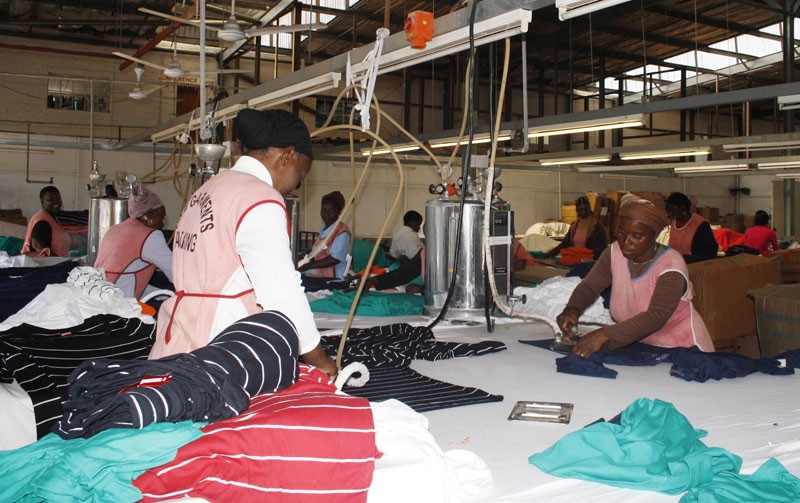Opportunities lost as Botswana misses AGOA train
Isaac Pinielo | Friday April 22, 2016 11:04


AGOA is a unilateral trade arrangement by the U.S for African countries. The benefits provided by the scheme have allowed for an average of around 70 percent of all imports from sub-Saharan Africa to enter the U.S duty-free.
Although Botswana has most of the factors that are required to be eligible for AGOA, local businesses are still lagging behind when it comes to international trade, particularly in exporting to the United States of America.
Botswana is empowered to export 6,500 products under AGOA, with textiles having benefited the most, dominating almost all AGOA exports.
However, recent data shows that Botswana textile exports to the U.S under AGOA stood at $7.5 million (P189m) last year down from $9 million in 2014, representing an 11 percent fall.
Sam Lin, the director of Botswana’s only AGOA textile export company, Carapparel Botswana attributed the fall in exports to challenges such as strong competition from Asian countries, labour issues, water and power cuts, as well as reduced demand.
He noted that there is shortage of skilled labour, as well as difficulty of getting work and residence permits for non-citizen employees.
“In 2011 the company employed 1,200 employees, but we were forced to downsize these numbers to 370 as part of the cost reduction strategy,” he explains.
Lin says the other challenge that hampers AGOA exports is that Botswana as a landlocked country does not have its own port of export, stating that his company uses the Durban port to export goods.
“This causes delays in shipment of our goods as they will be required to be checked by the South African customs officials,” he says. “They check them despite the fact that the goods had been checked by the local customs office here.”
At times, Lin said, business comes to a halt when they run short of materials due to the delay in shipping-in the materials.
President of Botswana Textile and Clothing Association (BTCA), Mohammad Ghafoor says Botswana businesses were losing out by not exploiting the preferential market under the AGOA.
He noted that local business face a myriad of challenges that include lack of duty incentives, rebates, and sourcing of raw materials.
“The fact that there are no institutions locally that train for basic skills on textiles also poses a serious problem to the industry,” he argues. Ghafoor says there is a need for concerted efforts between the government and local businesses to develop an efficient export strategy. Some observers have noted that Botswana firms have limited production capacities and that they had not adequately diversified their products.
Botswana has been trying to diversify its exports from beef and diamonds, but the country seems to have failed to rise to the occasion due to little sense of urgency in government.
Recently, assistant minister of Investment, Trade and Industry, Sadique Kebonang told Parliament that the government would develop new strategies during the financial year 2016/17 to take better advantage of opportunities under the AGOA.
The new strategies are anticipated to increase competitiveness and diversification of beneficiary exports to the United States.
In the period 2001/14, exports from AGOA-eligible countries increased by threefold from $1.3 billion (P13.9bn) to $4.4 billion (P46.9bn).
However, Botswana’s exports to the U.S in 2008 were a mere $15 million (P159.9m) compared to Lesotho, which exported goods worth $350 million (P3.7bn) under AGOA.
Other products that Botswana was eligible to benefit from include jewellery and leather products.
Indian diamond firm, Shrenuj Botswana, used to be the only company that tapped into the opportunity by exporting locally made jewellery to the U.S under AGOA. The company has since ceased using that opportunity. While Botswana has failed to take advantage of AGOA, Lesotho has consistently been the number one exporter of apparel to the United States under AGOA in sub-Saharan Africa.
Lesotho managed to establish one of the largest textiles and garment manufacturing industry in sub-Saharan Africa, following its development of a National AGOA Response Strategy with the overarching objective of improving and up-scaling the implementation of AGOA. The strategy was also aimed at establishing a diversified manufacturing sector.
At a recent AGOA seminar held in Gaborone, Lesotho’s Minister of Trade and Industry, Cooperatives and Marketing, Joshua Setipa urged Botswana to develop a national strategy, which has local participation and involvement of industry.
Setipa also said it should be a strategy that can help diversify the market, adding that there should be continuous improvement of the environment for doing business.
